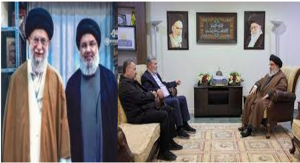The highly anticipated speech by Hezbollah Chief Hassan Nasrallah finally took place. In a lengthy address, interlaced with empty saber-rattling, Nasrallah echoed the directives of his masters in Tehran, attempting to distance Hezbollah from conflict in Gaza.
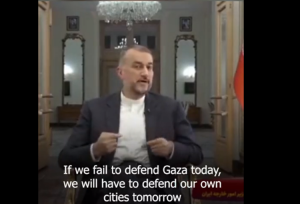
In truth, Iranian state officials have never concealed their involvement in the violent militia conflicts that have wrought havoc throughout the Middle East, bringing about profound socio-economic challenges for the rest of the world.
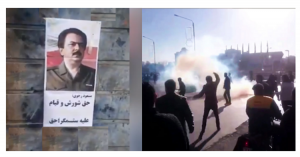
The regime is struggling to eliminate, and plot against an organized Resistance movement that has survived genocides, international crackdowns, and geographical displacement, striking Tehran’s regime at various levels intelligence, military, and political .
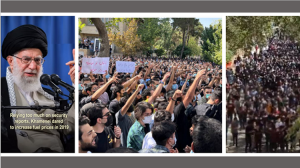
The people of Iran have consistently demonstrated courage and determination in their efforts to overthrow the regime led by Khamenei. Their protests, nightly endeavors shows their unwavering commitment to put an end to tyranny, despite the associated risks.
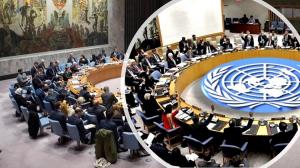
The (IRGC)and Ministry of Intelligence, are nothing more than terrorizing apparatuses, the international community can once again forge an alliance in showing the people of Iran that their struggle is a historic turning point for a safer and more peaceful world.
The regime intent to make the international community realize that Tehran is the driving force behind what they term the “strategic depth” of their regime.
— NCRI
PARIS, FARANCE, November 11, 2023 /EINPresswire.com/ — The National Council of Resistance of Iran-(NCRI) Foreign Affairs Committee in an article stated that in the wake of a week filled with propaganda and war rhetoric from the Iranian regime’s state and proxy media, the highly anticipated speech by Hezbollah Chief Hassan Nasrallah finally took place. In a lengthy address, interlaced with empty saber-rattling, Nasrallah echoed the directives of his masters in Tehran, attempting to distance Hezbollah and the Iranian regime from the ongoing conflict in Gaza.
While some observers may have breathed a sigh of relief, thinking that the escalation of the conflict had been postponed, most saw it as a sign of Tehran’s fear and strategic backpedaling. To gain a deeper understanding of the situation, it’s essential to scrutinize the statements of the Iranian regime.
Paradoxically, Iranian state officials persist in claiming their support for what they refer to as “the Axis of Resistance” while attempting to distance themselves from the events in Gaza. Supreme Leader Ali Khamenei, in particular, wishes to avoid being held accountable for his atrocities. In reality, he is playing a dual game of maintaining a state of neither war nor peace.
In truth, Iranian state officials have never concealed their involvement in the violent militia conflicts that have wrought havoc throughout the Middle East, bringing about profound socio-economic challenges for the rest of the world.
Their intent is to make the international community realize that Tehran is the driving force behind what they term the “strategic depth” of their regime.
On October 30, the Kayhan newspaper, under the influence of Khamenei’s office, published a transcript allegedly from a Q&A session with students. In response to a question, Hossein Shariatmadari stated, “Don’t ask me when the Islamic Republic is going to enter Gaza, but rather ask me when the Islamic Republic is going to leave Gaza.”
He emphasized, “We and the resistance forces, which have now spread throughout the Islamic world, are one unified entity. They are just like us, and we are the same as those present in Gaza, Lebanon, Yemen, Iraq, and Syria. We have not left the scene, and we are ready to intervene when necessary.”
However, what some politicians may perceive as the regime’s strength is, in reality, a point of weakness. If the belligerent regime learned one lesson from the eight-year Iran-Iraq war, it’s that it lacks the ideological powerhouse to win the hearts and minds of its own people, let alone those of other nations.
Consequently, it strategically exploits grievances in other countries, sows division among political factions, and seeks to establish a foothold for itself.
As Khamenei is acutely aware, his regime and its foreign proxies lack the integrity, motivation, and expertise to lead a nation toward peace and prosperity, their primary capability lies in perpetuating confrontation.
This strategy serves as a means to leverage a foreign enemy, using it as an excuse for their inability and the stark absence of merit in resolving problems.
A cursory examination of the current situations in Iraq, Lebanon, Gaza, and Yemen provides a clear picture of what the entities aligned with the Iranian regime represent. With Khamenei’s regime in control, millions of people, not just in Iran but across the region, are unlikely to experience prosperity and are condemned to live in poverty and the constant threat of conflict.
The sole viable option for the Middle East to achieve lasting peace and for the world to rid itself of medieval extremism under the guise of Islam is to support the very force that possesses the ideological, structural, and strategic foundation to challenge this regime on its own turf and bring about change in Tehran.
The Iranian regime’s Minister of Defense blatantly issued a stark warning to the US, urging an immediate halt to the Gaza war and the enforcement of a ceasefire, or face a significant retaliatory strike.
Even elements from previously defeated factions, who had not supported Khamenei during the 2022 uprising, now rally behind his adventurism and compete in praising the regime’s proxy militants abroad.
Despite this bold rhetoric, Khamenei and the regime have no intention of going to war with the United States or Israel. Having governed the country for the past four decades, they are acutely aware of the Iranian people’s sentiments towards their regime and regional pursuits. They understand that a direct confrontation would severely damage their regional standing, if not jeopardize their entire rule.
At the peak of political tensions with the US during Donald Trump’s presidency, on August 13, 2018, Khamenei conveyed to a gathering of loyal followers, “In short, to the Iranian people: there will be no war, and we will not negotiate. Why? Because war involves two sides: we, who do not initiate conflict, and the Americans, who also refrain from starting a war as they know it would be entirely to their disadvantage. Americans once attacked us in Tabas [referring to a military operation by US forces to rescue American hostages in 1981], and retreated! There will be no war, without a doubt.”
Khamenei’s confidence in Western inaction stems from four decades of an official policy of appeasement, swinging between “critical dialogue” and “constructive dialogue.” Ignoring the regime’s increased oil sales and succumbing to its hostage-taking strategy has only strengthened Khamenei’s belief that everything is tolerated as long as he can walk the fine line of no direct confrontation.
He perfectly knows that a strong tendency in the West has political and economic stakes in cowing toward dictators and will root for maintaining this disastrous doctrine under the pretext of avoiding war.
Championing a “no war” policy, the terrorist regime in Iran now seeks an alleged “de-escalation,” confident that the West’s failure to hold them accountable allows them to claim victory in a major regional conflict, disrupting alliances that were previously working towards their isolation.
Pleading with the terrorist regime in Iran to rein in its proxy militia groups only plays into Khamenei’s strategy, effectively acknowledging the status he has aggressively pursued. Rather than treating his regime as part of the solution, the world should officially declare that Tehran is the primary problem and will be addressed accordingly.
While it’s certain that post-World War I statecraft contributed to the outbreak of World War II by appeasing dictators, the current situation in Iran differs.
The regime there, albeit similarly thirsty for hegemony, is facing significant internal challenges from an oppressed nation that is actively resisting it despite the brutal consequences.
The regime is struggling to fight, eliminate, and plot against an organized Resistance movement that has survived genocides, international crackdowns, and geographical displacement, striking Tehran’s regime at various levels intelligence, military, and political.
Over the past five years, the people of Iran have consistently demonstrated courage and determination in their efforts to overthrow the oppressive regime led by Khamenei.
Their protests, both regional and nationwide, as well as nightly endeavors and occasional skirmishes, showcase their unwavering commitment to put an end to tyranny, despite the associated risks.
Rather than oscillating between war and appeasement, a cycle that historically leads to more conflict and bloodshed, the world should demonstrate its rejection of the regime’s threatening agendas.
By acknowledging that all the regime’s oppressive entities, e.g. the Islamic Revolutionary Guards Corps (IRGC)and Ministry of Intelligence, are nothing more than terrorizing apparatuses, the international community can once again forge an alliance in showing the people of Iran that their struggle is a historic turning point for a safer and more peaceful world.
Shahin Gobadi
NCRI
+33 6 61 65 32 31
email us here
![]()
Article originally published on www.einpresswire.com as Iranian Regime’s Objectives in the Gaza Crisis


